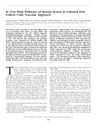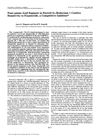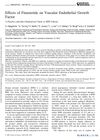Differential expression of steroid 5α-reductase isozymes and association with disease severity and angiogenic genes predict their biological role in prostate cancer
June 2010
in “
Endocrine Related Cancer
”
TLDR SRD5A1 is crucial in advanced prostate cancer, and blocking both SRD5A1 and SRD5A2 is more effective than targeting SRD5A2 alone.
This study investigated the role of steroid 5α-reductase isozymes, encoded by SRD5A1 and SRD5A2, in prostate cancer (PC) using tissue microarrays from 62 samples and prostate cell lines. It was found that nuclear SRD5A1 expression was linked to higher Gleason scores, cancer stage, and PSA levels, while SRD5A2 expression correlated with VEGF expression. Treatment with SRD5A inhibitors, finasteride and dutasteride, showed that dutasteride was more effective in reducing cell viability in PC3 and RWPE-1 cells. Despite this, some angiogenic genes remained active post-treatment, suggesting potential tumor resistance. The study concluded that SRD5A1 plays a predominant role in advanced PC, and combined inhibition of SRD5A1 and SRD5A2 was more effective than targeting SRD5A2 alone, although it did not significantly alter the angiogenic response.


